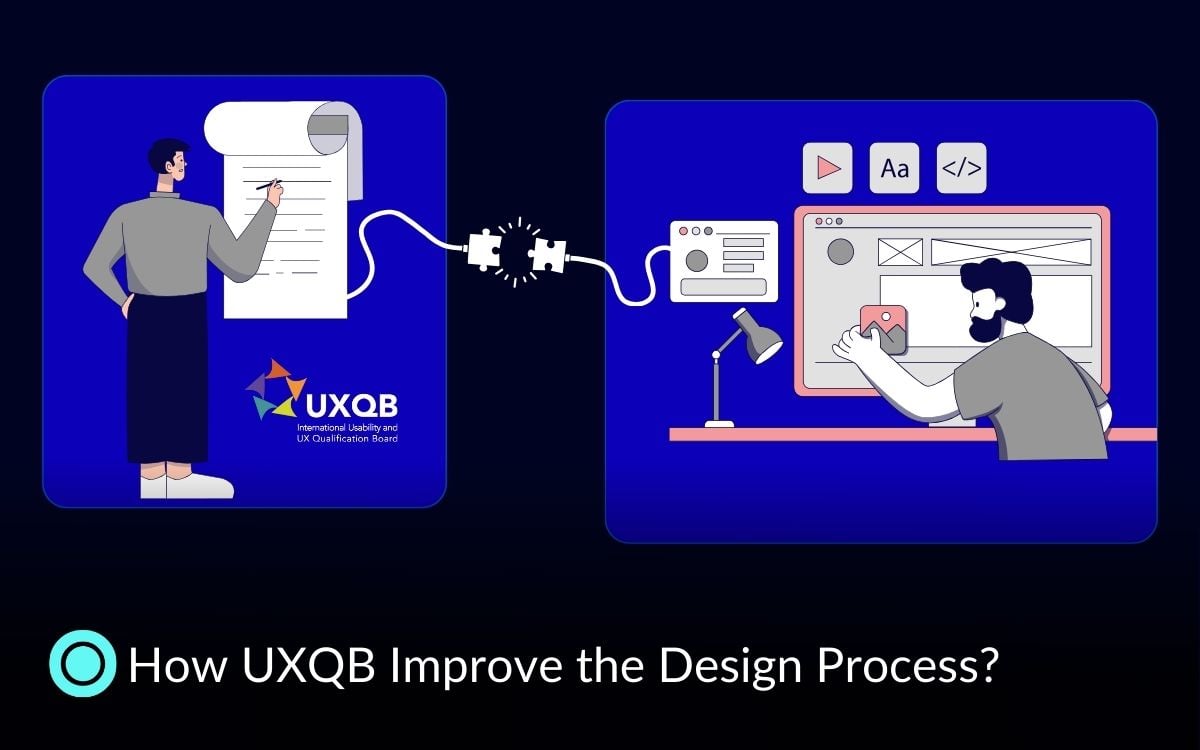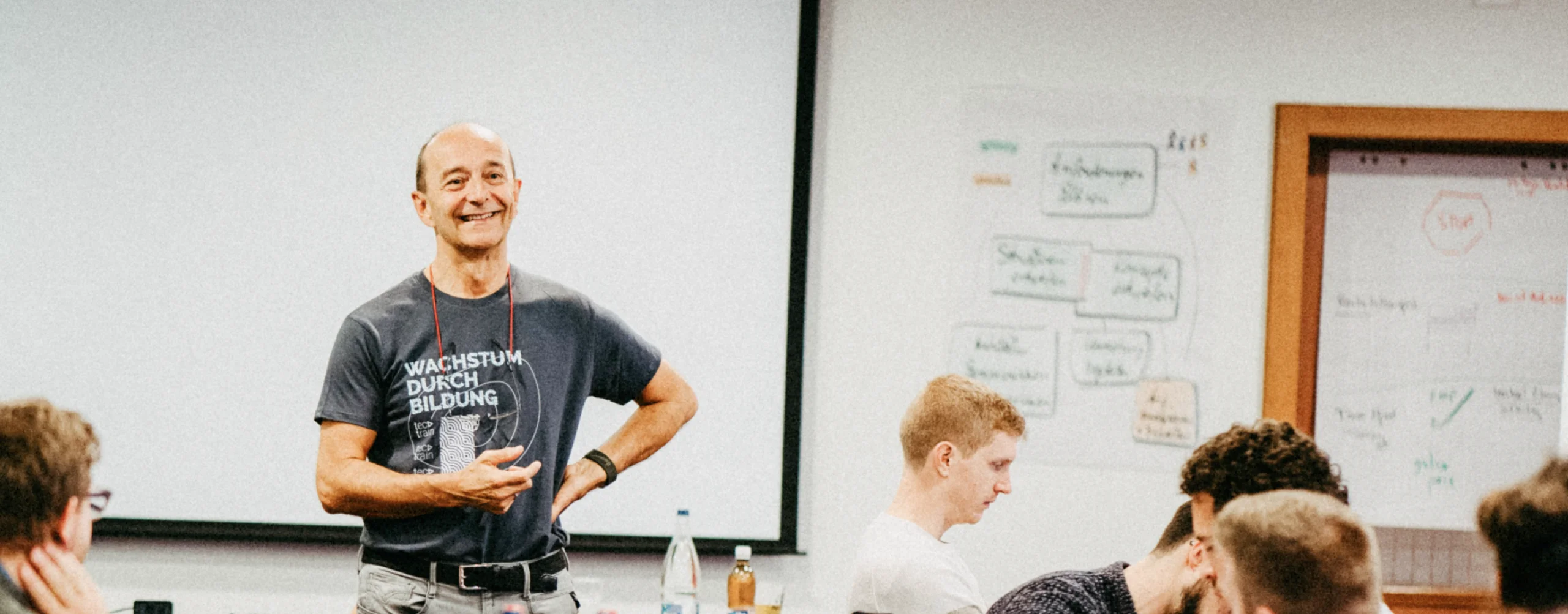Key Takeaways:
-
Solid Theoretical Foundation: The UXQB certification, such as CPUX-F, gives deep knowledge in user-centered design, usability testing and research so that the designers will not forget the key principles.
-
Practical Application: Wireframing and usability testing are just some of the tools and techniques that certified professionals will have at their command in order to do more accurate designs of real-world projects.
-
Problem solving efficiently: Certification of designers would ensure that usability issues could be spotted early through structured methodologies, thereby saving man hours along with money during the development process.
-
Better Communication: UXQB standardizes UX terminology. This, in turn, makes communication at a team's level and with non-UX stakeholders far easier.
-
Improved Design Process: A blend of theory and practice ensures better design outcomes, reduced errors, and a more user-centered approach.
What Is UX Design Process?
The UX design process is the step-by-step procedure that designers follow to create products and services that satisfy users' needs. It centers around the understanding of all phenomena which will fit under the label "user experience," consisting usually of a series of phases:
1. Research
This is the very first step of the designers' process and focuses on learning about users: what they need, how they act, and what problems they have. Designers use a variety of methods to get data removed from users, such as interviews, questionnaires, and observations. This is one of the critical parts of the project because it will definitely ensure that the product meets real user issues.
2. Define
Data is analyzed after its collection to come up with patterns of information. A clear problem statement is then articulated. It is at this stage that user personas are created for the different types of users.This is done to focus efforts on solving the most important problems for the target audience.
3. Ideation
Ideation consists of envisioning solutions when the problem has been well defined. The designers employ brainstorming techniques and other creative methods in their work to investigate multiple ways forward. It's a very broad stage where one thinks of several potential solutions to narrow down from and think about the very best.
4. Prototyping
Designers then build rough versions of their ideas. These prototypes may be low-fidelity sketches or much more detailed interactive versions. The idea of prototyping is to test how a design might work in real life and to try out different design ideas in a fast and inexpensive manner.
5. Testing
Then, prototypes are tested on real users in order to gain feedback.It helps designers understand what works, what doesn't, and what needs improvement. The testing feedback loop ensures that the product will be user-friendly and addresses the needs identified in the research phase.
6. Iteration
Designers might go back in the circle of design and refine their designs in light of test results, bringing improvements before final implementation. This process is iterated until the product effectively meets user needs.
In a nutshell, UX design is user focused and relies on feedback and testing at nearly every touchpoint along the process to guarantee an intuitive and useful final result. Each phase builds off of the previous, often occurring in cycles for continuous improvement throughout both design and development.
How Can I Choose the Best Certification?
There isn't a single "best" option for everyone in terms of UI/UX certification. Your right certification would depend on considerations including your goals and level of experience that you currently have, with how you apply those skills.
Curriculum Focus
Key Questions:
-
What skills do I have to work on?
-
Does this course cover details around UX research, design, or prototyping?
Choose a certification course that encompasses those areas of interest where you want to build improvements. If you like more practical work, let it have projects in which you apply your hands.
Personal and Professional Benefits
Key Questions:
-
How will this certification help me in my career advancement?
-
Does your employer value this certification? Does your industry value it?
Make sure it is a certification that will be in line with your goals in life, whether it is to gain new skills or stand out in order to get that well-desired promotion.
Costs
Key Questions:
-
What is the cost altogether, and can I afford it?
-
Am I able to commit the time necessary for this program?
Consider financial costs and investment of time. Assure that the benefits are worth more than the price.
Reputation and Reviews
Key Questions:
-
What do former students say about the program?
-
Does it hold respect from companies and hiring managers?
Look at reviews of certifications to see if it has helped others. It is vital that the certification you would like is recognized within your industry.
Instructor Background
Key Questions:
-
Are the instructors experienced professionals in the field of UX?
-
Would it be possible to have personalized feedback or mentoring?
Choose programs led by experienced instructors who can provide both theoretical and practical insights.
Post-Certification Opportunities
Key Questions:
-
Does the program have alumni networks or continued learning?
-
Are there possibilities of networking with other UX professionals?
Some courses offer access to communities and further learning after your certification.
Expanding Your Viewpoint
Key Questions:
-
Will the program help me to think innovatively about design challenges?
-
Does the work introduce new methodologies and tools?
Look for certifications that do much more than teach skills but also broaden the thinking and introduce new tools and approaches.
Impact on Your Career
Key Questions:
-
What does this certification indicate about me to employers?
-
Will it open up more job opportunities?
With the right certification, you gain better credibility forthwith. This would also promise your professional growth by opening up more job opportunities.
Think about the post-course value for your career: Is this going to help position you as a qualified UX professional? Does this strengthen my portfolio or my credibility in front of a hiring manager?
The best certifications build your reputation, help take you further in your career. Keeping these questions in mind will allow you to select a certification program that best aligns with your goals and would prove to add maximum value to you as both a person and professional.
Which Certification Is Best for UI/UX Designer?
There are various certifications that a UI/UX designer can get, each with its strengths, depending on your goals and experiences. Hereunder are some popular options that fit best into different needs and career stages.
Certified Professional in User Experience (CPUX) - Foundation Level
Mode of operation: The mode of study for CPUX-F is generally a combination of self-study and workshops. It includes both theoretical lessons and practical exercises.
Ideal for: This course is ideal for those who are complete beginners or want to gain an extremely firm foundation in UX principles, including usability and user-centered design.
Duration: A few days, possibly longer, depending on how the workshops are scheduled and how much time you devote to study.
Price: It normally ranges between € 1,100 to € 1,500, depending on the date and time. (You can check the link to learn current price.) This cost includes examination fees.
Explanations: CPUX-F Certification covers the basics of user research, design, and usability testing. This is globally recognized and gives a good theoretical grounding in UX. It's perfect for those who want formal recognition of your UX knowledge.
Featured Resource;
CPUX Certification: What Beginners Should Know
Nielsen Norman Group UX Certification
Mode of operation: Workshops - on campus as well as online. Courses: Practical-based, active participation.
Best for: Professionals who want to specialize in usability, research, or particular areas of UX design. This is similarly apt for both junior and experienced designers.
Duration: Flexible.Each course is about 1–2 days, and to receive this certification, it will be necessary to conclude 5 courses.
Price: At approximately $1,000 per class, full certification can be about $5,000.
Explanations: The fact that the Nielsen Norman Group certification is highly selective within the UX community, and opens a way for preferences in specializations of courses such as usability testing, interaction design, and UX strategy in specific practice areas of interest, makes it a very good option for professionals.
Google UX Design Professional Certificate
Mode of operation: 100% online self-paced, on Coursera.
Ideal for: Those just starting out who want an intensive introduction to UX. No prior experience is needed, it's ideal for people just getting into the field.
Duration: This course usually takes around 6 months to be completed on a 10 per week hours basis.
Price: $39 monthly via subscription on Coursera-thus, one of the most affordable certifications.
Explanation: Google's UX Design Professional Certificate covers all aspects of the UX design process, from research to high-fidelity prototyping, plus project work that will help you build a portfolio as you go. It is very well-acknowledged by employers, especially for junior positions.
Will a certificate from Google get me a job?
It is designed to make it possible for novices to break into this profession more easily, since in fact the Google UX Design Certificate is a highly regarded certification. To this end, Google even partners directly with companies that are looking to hire entry-level UX designers. However, the certificate will surely help enhance your resume, and you may be considered for actual hiring with added practical experience or internships.
Is getting a Google certificate worth it?
Moreover, the Google UX Design Certificate is an affordable means whereby new UX designers learn and build a portfolio. Most importantly, this is highly valuable for self-motivated learners who want a flexible, low-cost program.
How UXQB Certifications Improve the Design Process
UXQB certifications, like the CPUX-F certified professional for usability and user experience-Foundation Level, enjoy very high respect in the area of UX because of their powerful mix of theoretical knowledge and practical application. This kind of certification helps the UX professional apply structured methodologies with a view to improving user experience design in real projects.
1. Comprehensive Theoretical Foundation
The certification CPUX-F imparts all-round introduction to the basic principles of usability and UX design: user research, design principles, and usability testing are included. The theoretical knowledge obtained in this course will make sure that the certificate holder can boast of profound knowledge in user-centered design principles and usability concepts.
The CPUX-F Syllabus was especially developed to equip professionals with the knowledge to carry out a structured approach for UX projects. They have been enriched in the understanding of the analysis of user behavior, the design process as a whole, and the needs of the end-user that give valuable inputs in evidence-based design decisions.
2. Practical Usage in Real-World Projects
This certification does not just dwell on some theory; instead, it goes deep into practical skills the professionals can apply right onto their projects. For instance, CPUX-F taught techniques on usability testing and evaluation, wireframing, and prototyping-which are basic tools for iterative design.
It hence provides a chance for certified professionals to put this knowledge into practice in realistic scenarios with the purpose of effective usability testing. This will place them in a position wherein they can find and solve most usability issues before launching the final product and hence save a lot of time and resources during development.
The CPUX-F will also equip designers with the skills to produce prototypes accurately reflecting the needs of users, hence reducing flaws in design.
3. Improvement in Team Collaboration and Communication
UXQB certification also brings better communication and cooperation over boards. Thus, the certified UX professional is in a position to accommodate standardized terminology and processes for efficient communication of complex UX issues with their peers, from developers to product managers and clients. This shared understanding can vastly improve the overall workflow and lead to smoother execution of projects.
UXQB certifications, such as CPUX-F, give a sound theoretical base but at the same time provide designers with practical skills that allow making real qualitative improvement and effectiveness in the design process of real projects. This structured, research-based approach helps reduce design errors, makes sure results are user-centered, and fosters better collaboration within teams.
Conclusion
UXQB certifications, like CPUX-F, combine solid theoretical knowledge with practical skills to improve the UX design process. Designers develop a deeper understanding of user-centered design, usability testing, and research, enabling them to address problems early and save time and costs. Standardized terminology enhances communication within teams and with stakeholders, leading to smoother collaboration.In general, these certifications help create more effective, user-friendly designs, ensuring better outcomes for real-world projects.





